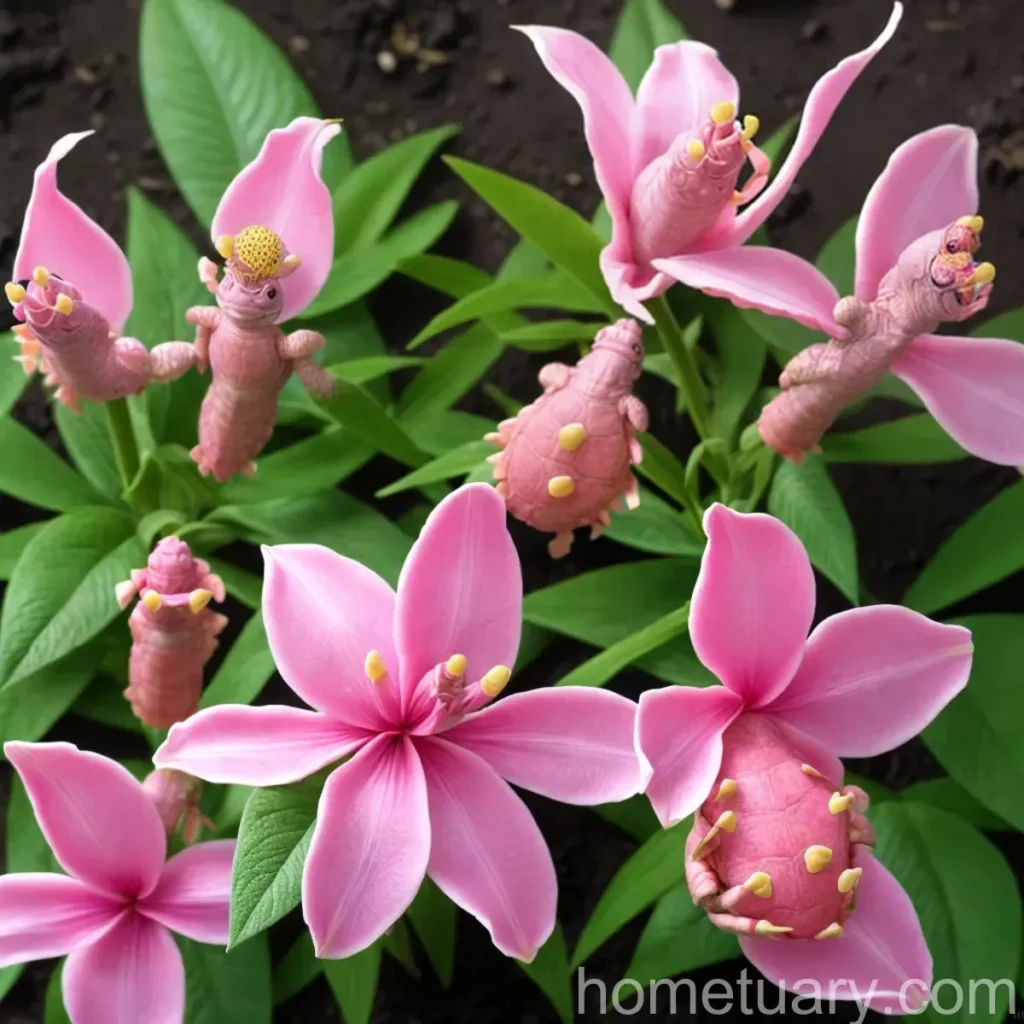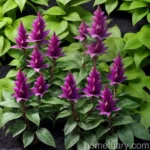Pink Turtlehead (Chelone lyonii ‘Armitpp02’ TINY TORTUGA)
Introduction
Plants play a crucial role in our environment and contribute significantly to the planet’s biodiversity. As a plant scientist, I am excited to delve into the intricate world of the pink turtlehead (Chelone lyonii ‘Armitpp02’ TINY TORTUGA). This exceptional plant has captivated gardeners and plant enthusiasts with its unique characteristics, stunning appearance, and diverse applications.
What is the Pink Turtlehead?
The pink turtlehead, scientifically known as Chelone lyonii ‘Armitpp02’ TINY TORTUGA, is a herbaceous perennial plant that belongs to the plantain family, Plantaginaceae. The plant is native to Eastern North America, where it thrives in moist woodlands, stream banks, and wet meadows. It derives its common name, “turtlehead,” from the resemblance of its flowers to the head of a turtle, especially when the blossoms are in the bud stage.
Key Takeaways – Pink Turtlehead (Chelone lyonii ‘Armitpp02’ TINY TORTUGA)
Before we explore the various aspects of the pink turtlehead plant, let’s briefly highlight the key takeaways:
- Plant Name: Pink turtlehead (Chelone lyonii ‘Armitpp02’ TINY TORTUGA)
- Family: Plantaginaceae
- Native Habitat: Eastern North America
- Common Features: Resembles the head of a turtle, herbaceous perennial, ideal for moist environments
- Scientific Varieties: Chelone lyonii ‘Armitpp02’ TINY TORTUGA
- Application: Ornamental gardening, landscaping, wildlife gardens
Now, let’s delve into each aspect of the plant to gain a comprehensive understanding of its culture, uses, care requirements, and more.
Culture
Water
The pink turtlehead plant thrives in moist to wet soil conditions, mirroring its natural habitat in wet woodlands and stream banks. When cultivated in gardens or landscapes, it’s essential to provide consistent moisture to the plant, especially during hot and dry periods. Adequate irrigation is vital for the plant’s growth and flowering.
Sunlight
In terms of sunlight requirements, the pink turtlehead plant flourishes in partially shaded to fully shaded environments. It thrives under the dappled light of deciduous trees or in areas with filtered sunlight. However, it’s important to ensure that the plant receives sufficient light to support its photosynthetic processes and promote healthy growth.
Fertilizer
When it comes to fertilization, the pink turtlehead plant benefits from a balanced, slow-release fertilizer applied in the spring as new growth emerges. A general-purpose, granular fertilizer with equal N-P-K (nitrogen, phosphorus, and potassium) ratio is suitable for promoting robust foliage and blooms.
Soil
The plant prefers rich, consistently moist, and well-draining soil with a slightly acidic to neutral pH. Amending the soil with organic matter such as compost, leaf mold, or well-rotted manure can enhance its moisture-retention capacity and nutrient content, creating an ideal growing medium for the pink turtlehead.
Uses
The pink turtlehead (Chelone lyonii ‘Armitpp02’ TINY TORTUGA) offers various uses and applications, making it a valuable addition to gardens, natural landscapes, and wildlife habitats. Let’s explore its diverse uses in more detail:
- Ornamental Gardening: The plant is a prized addition to shade gardens, woodland gardens, and naturalized landscapes, adding exquisite color and texture with its distinctively shaped flowers.
- Landscaping: Its elegant, upright growth habit and attractive blooms make it an excellent choice for landscaping schemes, especially in areas with moist soil or near water features.
- Wildlife Gardens: The nectar-rich blossoms of the pink turtlehead plant attract pollinators, including bees and butterflies, enhancing the biodiversity of wildlife-friendly gardens and natural habitats.
Pruning
Pruning the pink turtlehead plant is relatively minimal and primarily focuses on removing spent blooms and maintaining its desired shape. Deadheading, or the removal of faded flowers, can prolong the blooming period and encourage the plant to allocate energy towards new growth and additional blooms.
Propagation
The pink turtlehead plant can be propagated through division, cuttings, or seed sowing. Here’s a brief overview of these propagation methods:
- Division: Dividing mature clumps of the plant in the early spring is an effective way to propagate new specimens. Each division should have several healthy shoots and a portion of the root system for successful establishment.
- Cuttings: Stem cuttings taken from the plant in early summer can be rooted in a suitable growing medium to produce new plants. Hormone rooting powder can facilitate the development of roots on the cuttings.
- Seed Sowing: Collecting and sowing ripe seeds in a well-prepared seed-starting mix can yield new seedlings. The seeds require a period of cold stratification to germinate, mimicking their natural dormancy and germination process.
Container Popularity
The pink turtlehead plant is gaining popularity as a container plant, especially for shaded balconies, patios, and outdoor living spaces. Its striking blooms, lush foliage, and adaptability to container culture make it an appealing choice for container gardening enthusiasts. When selecting a container, ensure that it provides adequate room for the plant’s root system to develop and that it has drainage holes to prevent waterlogging.
Container Common Diseases
While the pink turtlehead plant generally exhibits good disease resistance, it may be susceptible to certain fungal diseases in humid or poorly ventilated conditions. Common diseases that can affect the plant in containers include:
- Powdery Mildew: A fungal infection characterized by powdery white patches on the foliage, often caused by high humidity and limited air circulation.
- Leaf Spot Diseases: Various fungal pathogens may cause circular or irregular spots on the leaves, potentially leading to leaf yellowing and premature defoliation.
Disease Diagnosis
Diagnosing diseases in the pink turtlehead plant involves closely observing the foliage, stems, and overall plant health for any signs of discoloration, lesions, or abnormal growth. Timely intervention with appropriate cultural practices and, if necessary, targeted fungicidal treatments can help manage and prevent the spread of diseases.
Common Pests
The pink turtlehead plant is relatively resistant to pest infestations, but certain garden pests may occasionally pose a threat to its health and vigor. Some common pests to watch out for include:
- Aphids: These small, soft-bodied insects may cluster on the tender shoots and undersides of the leaves, sucking sap from the plant and potentially causing distortion of new growth.
- Spider Mites: These tiny arachnids can infest the plant in hot, dry conditions, leading to stippled, discolored foliage and reduced plant vitality.
Botanist’s Tips
As a plant scientist, I offer the following tips for cultivating and caring for the pink turtlehead plant to ensure its optimal growth and beauty:
- Mulching: Applying a layer of organic mulch around the plant’s base can help retain soil moisture, suppress weed growth, and provide insulation during temperature fluctuations.
- Companion Planting: Pairing the pink turtlehead with shade-loving companions such as hostas, ferns, and astilbes can create visually appealing and harmonious planting combinations in shaded landscapes.
- Wildlife Considerations: Embracing the plant’s role in supporting pollinators and wildlife, incorporating it in wildlife-friendly gardens and naturalized areas can contribute to enhancing ecological diversity.
Fun Facts
Delving into the realm of plant science often uncovers intriguing and delightful facts about the natural world. Here are some fun facts about the pink turtlehead (Chelone lyonii ‘Armitpp02’ TINY TORTUGA):
- The scientific name “Chelone” is derived from Greek mythology, where Chelone was transformed into a turtle for her insolence towards the gods, reflecting the plant’s association with the turtle motif.
- The pink turtlehead is known for its ability to thrive in challenging, waterlogged environments and is often used in wetland restoration and rain garden projects to stabilize soil and enhance biodiversity.
Links to External Resources
For further exploration and comprehensive information about the pink turtlehead (Chelone lyonii ‘Armitpp02’ TINY TORTUGA), I’ve curated a selection of valuable external resources:
- Plant Profile: Chelone lyonii ‘Armitpp02’ TINY TORTUGA – Missouri Botanical Garden
- Growing Turtleheads – National Gardening Association
- Chelone lyonii ‘Armitpp02’ TINY TORTUGA – Plant Select
- Perennials: Chelone lyonii – The Hardy Plant Society
- Native Plants for Wildlife Habitat and Conservation Landscaping: Chelone lyonii – US Forest Service
As we conclude this exploration of the captivating pink turtlehead (Chelone lyonii ‘Armitpp02’ TINY TORTUGA), I hope this comprehensive guide has offered valuable insights into the plant’s culture, uses, care, and significance in horticulture and ecological restoration. Embracing the remarkable diversity and beauty of plants such as the pink turtlehead enriches our understanding of the natural world and inspires a deeper appreciation for the plant kingdom.
As a plant scientist, I take great pleasure in unraveling the intriguing characteristics and valuable applications of unique plant species. If you have any questions or wish to delve further into the realm of plant science and horticulture, feel free to reach out for more in-depth discussions and insights. Happy gardening and exploration of the botanical wonders around us!















